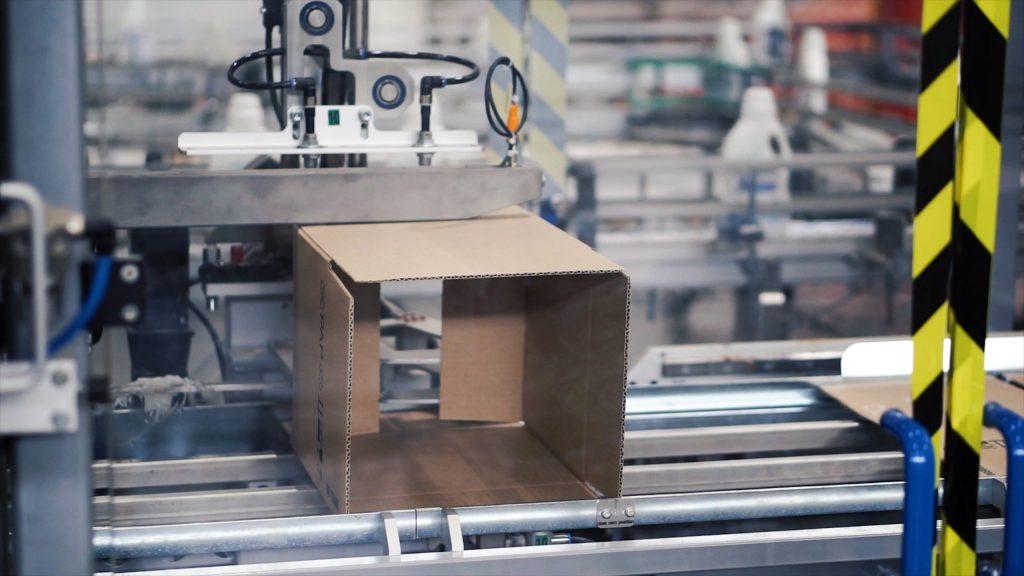
With the addition of digitalization, at a time when technology is constantly changing things food packing business is undergoing big changes. This paradigm shift creates a slew of new possibilities and problems that must all be carefully considered. This blog post examines the advantages and disadvantages of digital food packing.
Streamlining complicated processes in the food packaging business, digitalization plays an important role. Such a situation has also ushered in an age of optimization across the entire life cycle of packaging. However, the addition of automation was arguably a crucial ingredient in this transformational journey. With it, not only are mistakes caused by human beings reduced but production speed is increased In fact, this application of digital technologies and robotics greatly simplifies packing operations overall. Compared to the way things have always been done in industry, this is a big change.
Digitalization enables products to be traced and tracked throughout the entire supply chain. In addition to providing food safety, this makes quick response possible in the event of a recall.
How technology is shaking up old industries The food packing industry, worth billions of dollars and working to guarantee that the path from farm to table remains safe and high quality, has finally got its wings. Food packing will be greatly impacted by digitalization, and it can’t be blocked.
Step into the future of packaging with AKI Wholesale Packaging Supplies!
AKI Wholesale Packaging Supplies cutting-edge wholesale packaging supplies Imbed the potential of innovative packaging into your restaurant. Seize the digital age and smart packaging era to help propel your business ahead in today’s ever-changing food industry. We provide a variety of customized materials that are compatible with temperature monitoring devices as well as environmentally friendly packaging to suit your changing needs. Boost the customer experience: sustainable and advanced packaging materials. If you have loading or unloading needs, feel free to contact us today. Let’s begin a journey together toward an environmentally friendlier and more productive way of handling food packaging!
Now, in the world of food packaging, digital technologies are moving smarter package options beyond what has been done before. Cutting-edge features include interactive signs, freshness markers and real time temperature monitoring.
Temperature monitoring guarantees the highest quality and safety standards, maintaining goods in the best possible state from manufacturing to consumption. Because freshness indicators provide easy information on how long something will keep, providing better choices and wasting less food means that packaging material is more environmentally friendly.
Interactive signs equipped with digital technology The customer experience is richer, adding more information about the product and recipes as well as a means to provide feedback. But this transformation is not only about function, it creates an expressive living interphase between the foods and consumers of today’s food packaging.
The initial investment will not be small. But the long-term benefits are savings in operating costs, reduced waste generated, and improved resource use – all conducive to an environmentally friendly packing process which is more economical as well.
Digitalization creates enormous amounts of data that can provide invaluable information about consumer behavior, market trends, and production procedures. This data-driven approach gives businesses the basis for making sound decisions and keeps them one step ahead of their competitors.
Digitalization is changing the food packaging industry. These changes are also being reflected in wholesale packaging products. The growing incidence of technologies, smart packing goods, and so on has raised the need for materials that can couple with temperature-checking devices as well as offer an interactive element. Wholesalers should prioritize customization. Offer different flexible arrangements to meet the requirements of businesses going digital.
Bulk providers should also consider sustainability, and provide a wide selection of eco-friendly packaging materials. Tying in with this, if you can differentiate your business by specializing In the combining of technologies, then features such as temperature tracking and labels that give accurate freshness indicators will work. Wholesale packaging products must find cost solutions in today’s era of change: bulk buying abilities and reward disputes for green materials. As companies continue embracing a friendly, technology-friendly future–the food packaging industry plays its part in meeting the changing needs of business. The wholesale boba tea supplier manufacturer around you is the best. You will get the best packaging and delivery service there.
However, the full implementation of digital technologies requires a big upfront investment in infrastructure, software, and personnel training. This initial expense could represent an insurmountable barrier to smaller businesses.
Since the industry is becoming increasingly connected, the risk of cybersecurity threats grows. The digitalization process finally becomes an issue for businesses: They must safeguard sensitive data and ensure the safety of their systems.
Relying too much on digital systems creates problems when technical difficulties arise. However, glitches in its systems meantime could stop production, and hence disrupt operations with resulting losses.
That means the digitalization transition requires a qualified workforce that can master advanced technology. For some companies, retraining existing employees or hiring people with the necessary skills may be a problem.
Ironic, however: if the digitalization of packaging is not done thoughtfully it can create still more electronic waste. Of course, the discard of old or nonfunctional digital parts has environmental repercussions that need to be considered.
Adding digitalization to the food packaging industry can bring an array of benefits from efficiency to intelligent packaging solutions. Still companies should recognize the risks, including front-loaded costs, computer security concerns and negative impacts on nature. A balance must be sought between innovation and ecology so that the potential of digitalization in food packaging can truly blossom.